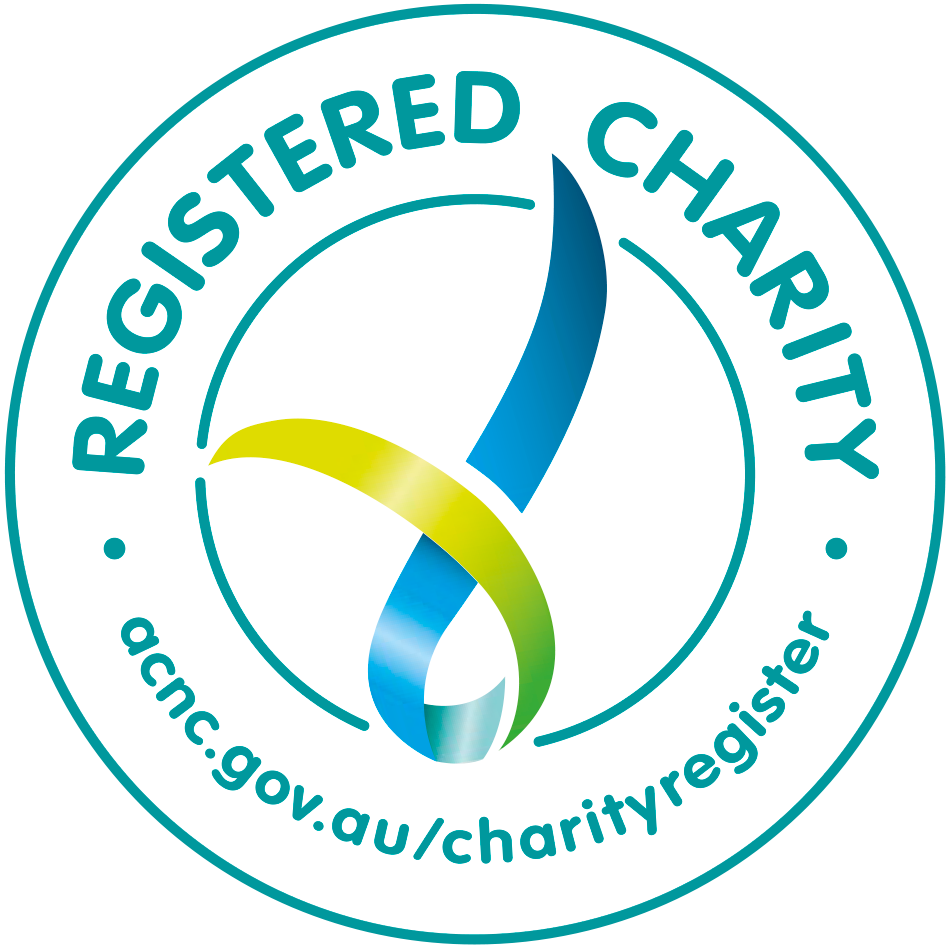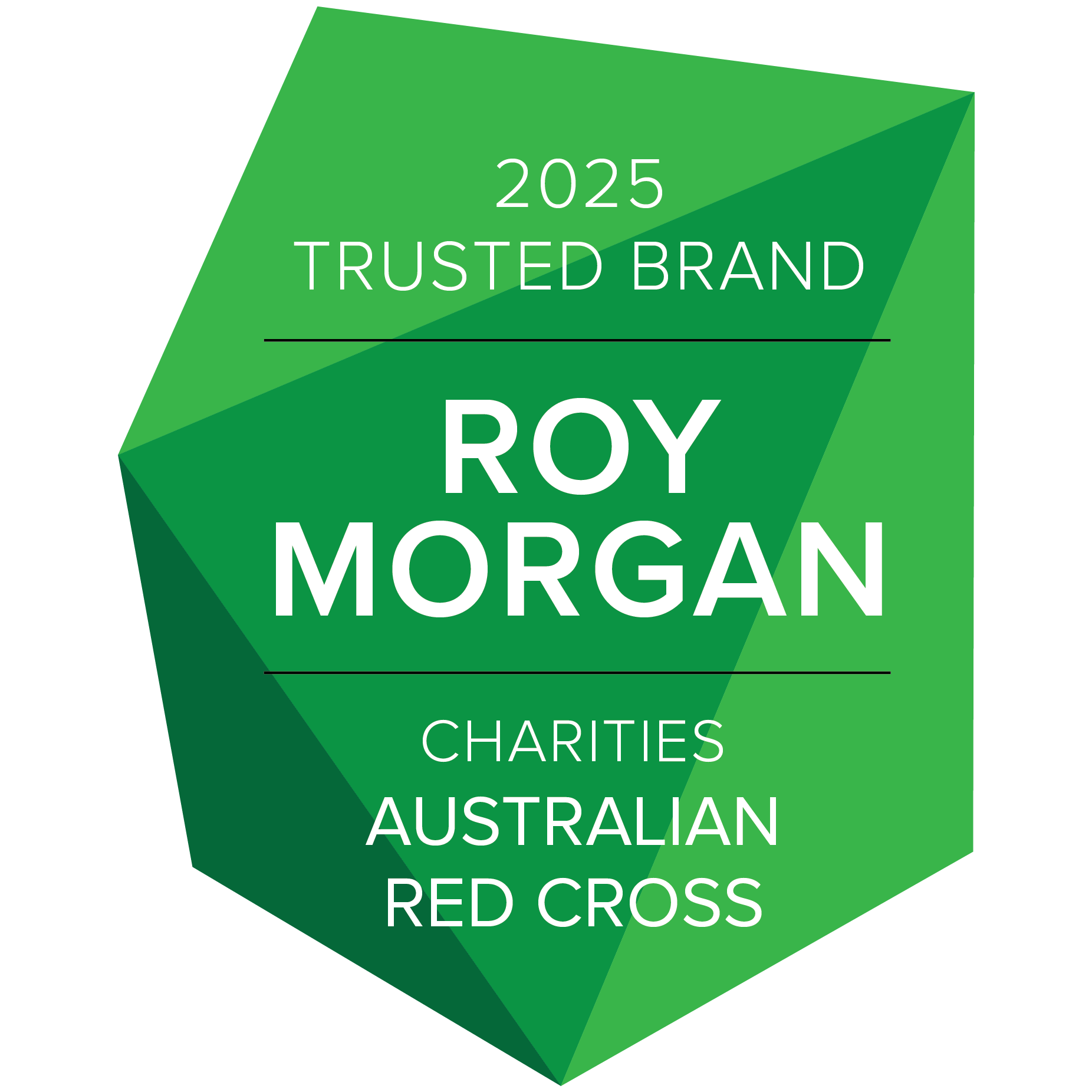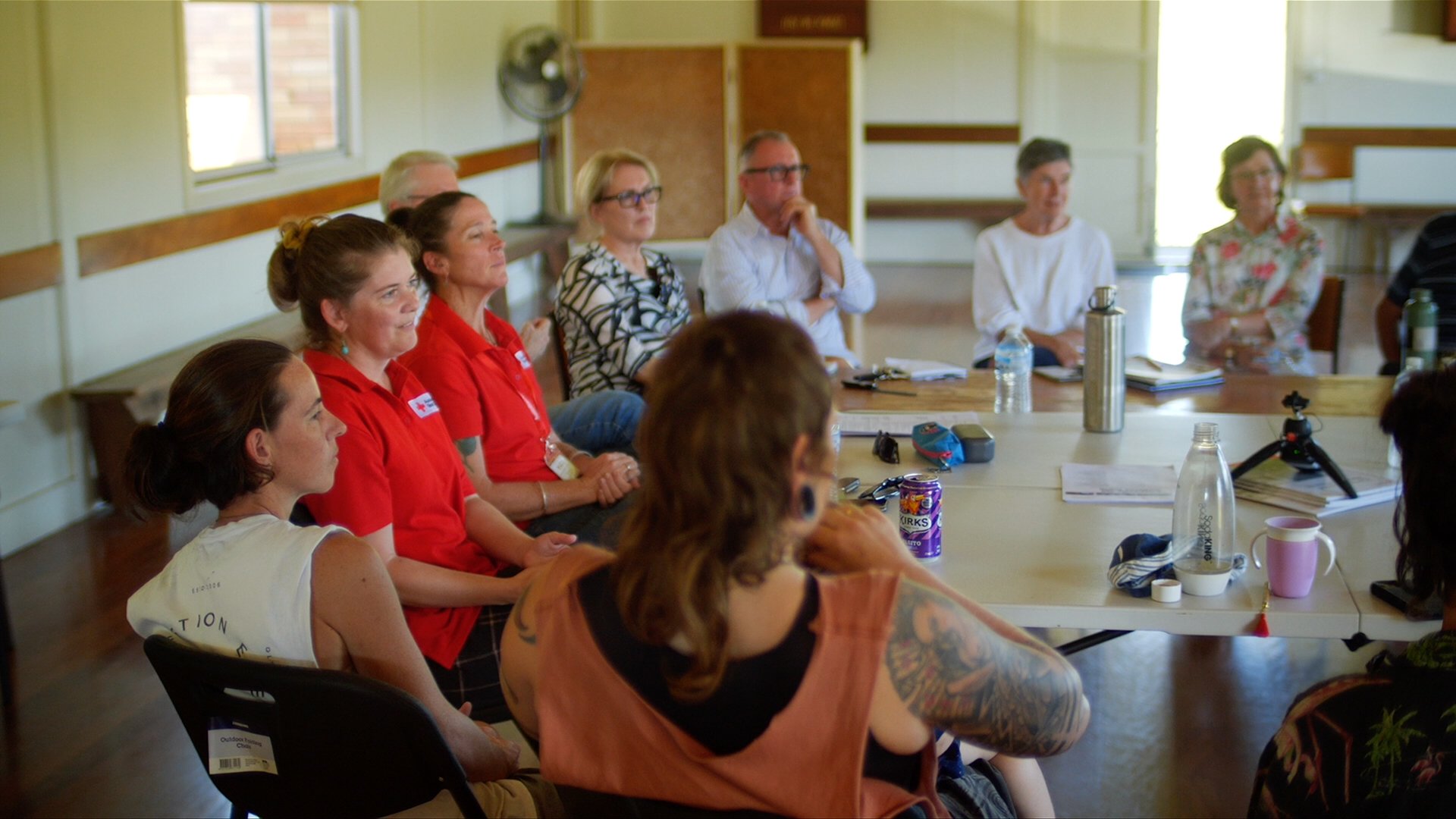

Following the establishment of a Community-led Resilience Team, residents in the Northern Rivers township of Rock Valley helped to rescue a man from floodwaters during Tropical Cyclone Alfred in February 2025.
When flooding from Tropical Cyclone Alfred threatened to inundate the coastal region of Northern New South Wales in March this year, the people of Rock Valley readied themselves for yet another disaster. Nestled in the Northern Rivers hinterland, just a 15-minute drive from Lismore in North-Eastern New South Wales, the small community had endured years of heavy rain, landslips and flooding – in 2022 Northern NSW was hit by the worst floods on record, claiming the lives of five people while leading to extensive damage and displacement. Yet Rock Valley hadn't experienced a cyclone like this in decades, and there was a sense of fear percolating around the arrival of such an unprecedented weather event, and the damage it could bring.
“A lot of people were scared, worried, unsure,” remarks Megan, the owner of the local post office, which also doubles as a community hub for the wider township’s 261 residents. “Being told there was going to be a cyclone with 150 kilometre an hour winds got us all very scared. We didn't know what to expect.”
Despite not knowing what to expect from a cyclone, the people of Rock Valley felt better prepared for its arrival than they did past disasters. With funding from the Australian Government and support from the NSW Reconstruction Authority, Australian Red Cross has been working alongside the small township to set up a Community-led Resilience Team (CRT), which has so far included First Aid and UHF radio training, as well as the establishment of a local emergency communication network.

The Red Cross CRT model was initiated in Tweed Shire in Northern NSW in response to extreme flooding that occurred in the wake of Tropical Cyclone Debbie in 2017. The aim of these community-led teams was simple but critical: to assist communities in coming up with ways to prepare and support one another through future emergencies. Because Australian Red Cross has a longstanding and trusted local presence throughout the region, we empower these local groups to make, improve and action disaster preparation plans through hosting local training sessions and community engagement events, while providing volunteer support during moments of emergency, and well into the clean-up effort and early recovery. There are now more than 130 CRTs in areas of high disaster risk in NSW.
In Rock Valley, the CRT UHF radio training day took place less than three weeks before Tropical Cyclone Alfred threatened to make landfall. Residents who attended learnt the basics of radio use and how to issue a call out. The communication network was updated, and residents knew who they should try to reach via radio in the case of an emergency when usual communication channels were down. On the evening of 7 March 2025 as the storm approached, residents Paul and Lisa were alerted by their teenage daughter to a strange sound outside. “She thought it was a cow bellowing, or somebody calling out for help,” recalls Lisa. They soon discovered it was the latter – someone had tried to drive across the bridge outside their property and was stranded in the flood waters, which were rising by the minute.
“As soon as we heard him yell for help, we were on the go,” says Lisa. “We were just thinking, ‘what are we going to do? How are we going to help?” adds Paul.
Hoping they could reach the man and pull him to safety, Paul grabbed an empty jerry can and some lengths of rope. But as soon as he approached the water’s edge, he knew it was too dangerous to go any further. It was Lisa that turned to the UHF radio to reach their neighbour David as they drove to his house for help – she had been added to the Rock Valley CRT communication network on Facebook Messenger just two days earlier, and because of this, knew that David had a working landline that could be used to contact emergency services and alert them to the stranded man.
Within moments of having the situation explained to him by Paul and Lisa, David was dialling triple zero. Fifteen minutes later, the flashing lights of rescue vehicles could be seen approaching; the man stranded near the bridge was able to be retrieved by boat and pulled to safety.
“If we hadn’t set up that communication network before the rescue, I don’t know what we would’ve done,” remarks Lisa. “I wouldn’t have known who to call. But knowing who else is nearby, and how best to put a call out on the UHF to receive a stronger response from the community – that really made all the difference."
Angus, a local grazier who heard Lisa calling for David on the night of the rescue, shares a similar reflection. “We’re very lucky to have Australian Red Cross come into our community and hold these training days on all these different topics. It helps to bring the community together, it keeps us safer, and it keeps the community informed,” he remarks.
With emergency events becoming more common and extreme, community-led resilience is more important than ever. Thanks to the success of the Red Cross CRT program in the Northern Rivers region – in addition to Rock Valley, more than 90 CRTs from Tweed to Clarence have benefitted from better disaster preparation – Australian Red Cross is working to roll out similar workshops and communication networks in communities across the country as part of our CRT and REDI Communities initiative.
“The communication network is as simple as talking to your neighbour about what to do. It doesn't have to be everyone having some high-tech communication gear. It's having that conversation,” says Paula, another member of the Rock Valley Community. “Being able to get that information out there, having somebody that was able to utilise that information and save a life – that's pretty amazing.”
Moreover, the rescue was a testament to the power of community, and what’s possible when people come together to be better prepared.
“That’s what Rock Valley is about,” adds Megan, the post office owner. “When someone's in trouble, we run towards them, not away from them.”
Red Cross pays our respects to the Aboriginal and Torres Strait Islander custodians of the country where we work, and to Elders, past, present and emerging.
Learn about our Reconciliation Action Plan and how we can all make reconciliation real.
This website may contain the images, voices or names of people who have passed away.


© Australian Red Cross 2026. ABN 50 169 561 394
